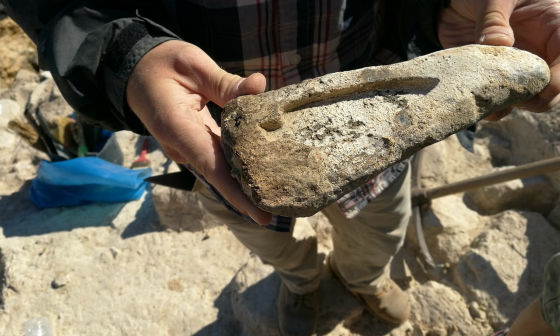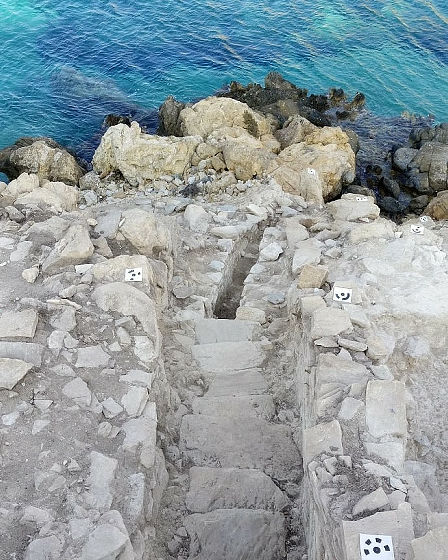Traces of advanced urban engineering and metalworking can be found on pyramid island of Greece flourished 4000 years ago

In "Keros Island" floating in the Aegean Sea, which flourished about 4000 years ago, the part of the cape that sticks out to the sea has become a triangular shape and forms a "natural pyramid". People of those days covered this pyramid with a total of 1,000 tons of white stones and were able to see it from the sea a few kilometers away as a religious sacred place that was extremely glorious. Even now there are traces left on the island, but it is clear that the investigation by archaeologists has brought in urban engineering and metalworking that also leads to modern thinking.
Complex engineering and metal-work discovered beneath ancient Greek 'pyramid' | World news | The Guardian
https://www.theguardian.com/world/2018/jan/18/complex-engineering-and-metal-work-discovered-beneath-ancient-greek-pyramid
A research team of scientists from the University of Cambridge, UK, which is investigating Keros Island. Keros is located in the Aegean SeaCyclades IslandsIt was an island forming part of the island, about 3700 years ago in the Bronze Age and before that, the sea level was lower than the current sea surface, so it was in contact with some other islands. Three thousand years ago it was thought that there was a cathedral on this island as a sacred place for religion, and in the past investigation by the research team various sculptures and ruins have been found.
One of the things found on this island is a workshop (processing plant) for manufacturing metal products. The following photograph shows a stone carved with a hollow on the surface, but it is understood that it is a mold for casting melted copper and making something like a dagger. Besides this, on the islands, there are also molds for making copper dishes and copper axes, also used for waste materials and fire generated during metal processing "bellowsIt seems that facilities for making 'are found.

Michael Boyd of the University of Cambridge, who led the survey, believes that the expertise was focused on Keros Island in times when people had very limited opportunities to touch both metalworking skills and raw materials I will. Mr. Boyd says, "From the appearance of metalworking, we can see" the beginning of urbanization "here." As a result of concentration of advanced know-how, people gather from afar, accompanied by crafts and agricultural products gathering, along with the evolution of buildings parallel to the formation of the city, the island is the original sanctuary It is thought that it has advanced to a big city beyond.
Traces of foods including cereals such as beans, grapes, olives, figs, almonds and wheat and barley were found from the soil excavated on the island. Mr. Evi Margaritis of the Cypriot Institute says, "Many of these foods were brought in by imports, so from this perspective we need to rethink about the way the urban connections have been considered" I said.
This picture is a glimpse of the appearance of such a city. From the bottom of the stairs made of stones leading to the sea, a waterway that is considered to be due to drainage has been found. An example of the fact that a water supply was made in the city was also on Crete Island of the Aegean SeaRuins of KnossosAlthough it is known, on Keros island, it is known that water facilities were made about 1000 years ago.

The research team has found that it has discovered a clay kiln that has not been broken yet at the site of a processing place where metal processing was done so far. During the next survey we are going to open this kiln and investigate what is inside. For the excavation work, the recording system using the iPad "iDig"By using digital records of photos and survey records of the entire excavation process, everyone can access the data in real time, and it is also possible to create a three-dimensional model.
Related Posts:
in Science, Posted by darkhorse_log







